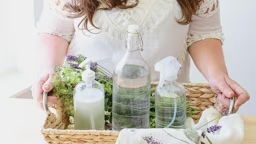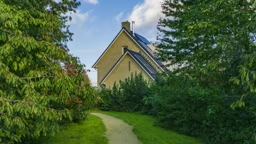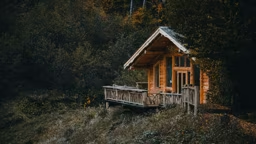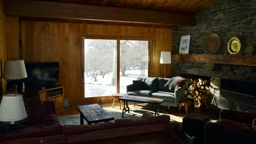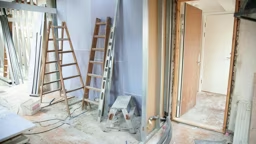So why does lakeside paint fail? Moisture, whether in the form of lakeshore humidity, rain, dew, or ice, is often the most destructive element to paint. Sun and wind also contribute to paint failure, and the lake side bears the brunt of abuse from all three destructive elements.
Early warning signs
Boils, cracks and discolorations are all signs that moisture is invading your cabin’s paint. You’ll probably first notice this at the edge of siding boards or at the corners of your cabin.
Treatment for existing paint problems
Mildew and minor blemishes can often be treated by wiping down the surface with a cleaning solution of one-cup bleach to a gallon of water. Unfortunately, once peeling or cracking occurs, the best option usually involves stripping and repainting. If the problems are isolated to certain areas, you can spot repaint. However, a total repaint will provide a uniform, protective coat for your cabin.
Early warning signs
Boils, cracks and discolorations are all signs that moisture is invading your cabin’s paint. You’ll probably first notice this at the edge of siding boards or at the corners of your cabin.
Treatment for existing paint problems
Mildew and minor blemishes can often be treated by wiping down the surface with a cleaning solution of one-cup bleach to a gallon of water. Unfortunately, once peeling or cracking occurs, the best option usually involves stripping and repainting. If the problems are isolated to certain areas, you can spot repaint. However, a total repaint will provide a uniform, protective coat for your cabin.
Eliminate interior moisture
Moisture coming from the inside of your cabin can actually be more destructive than outside sources. Make sure you have properly vented your attic and eliminated any in-cabin sources of moisture before repainting (faulty dryer vents, leaky pipes, wet basements, etc). If your new coat of paint seals up a previously porous cabin skin, interior moisture problems can create serious issues.
If you need to repaint
To combat moisture, your repainting regime should have the following components:
Moisture coming from the inside of your cabin can actually be more destructive than outside sources. Make sure you have properly vented your attic and eliminated any in-cabin sources of moisture before repainting (faulty dryer vents, leaky pipes, wet basements, etc). If your new coat of paint seals up a previously porous cabin skin, interior moisture problems can create serious issues.
If you need to repaint
To combat moisture, your repainting regime should have the following components:
- A dry, clean surface stripped of all old paint.
- A water-repellent primer under your paint layer, which should also have a mildew-resistant feature. Do your research, and select a high-quality primer and paint that doesn’t sacrifice strength for water resistance.
- Paint should be applied at a proper temperature. Painting on a hot surface with direct sunlight during drying can create blisters, which will eventually “pop” and allow moisture in.
PAINTING 411
Here are some tips for any paint job at the cabin:
PPP
PPP stands for Painting Prep Pilot. Select a small area of the cabin, strip the old paint and clean the surface, and then apply your new paint. After a couple drying days, firmly press a strip of tape or a band-aid to the painted surface and rip it free. If it comes off clean, your prepping technique is sound. If the tape has paint on it, you need to do a better prep job.
Oil vs. latex
Latex paint is very popular because of easy clean up with water. But for high-moisture areas, oil has advantages. Its low porosity prevents outside moisture from penetrating, and it’s more resistant to temperature swings.
Here are some tips for any paint job at the cabin:
PPP
PPP stands for Painting Prep Pilot. Select a small area of the cabin, strip the old paint and clean the surface, and then apply your new paint. After a couple drying days, firmly press a strip of tape or a band-aid to the painted surface and rip it free. If it comes off clean, your prepping technique is sound. If the tape has paint on it, you need to do a better prep job.
Oil vs. latex
Latex paint is very popular because of easy clean up with water. But for high-moisture areas, oil has advantages. Its low porosity prevents outside moisture from penetrating, and it’s more resistant to temperature swings.
 Thinkstock.com
Thinkstock.com 




